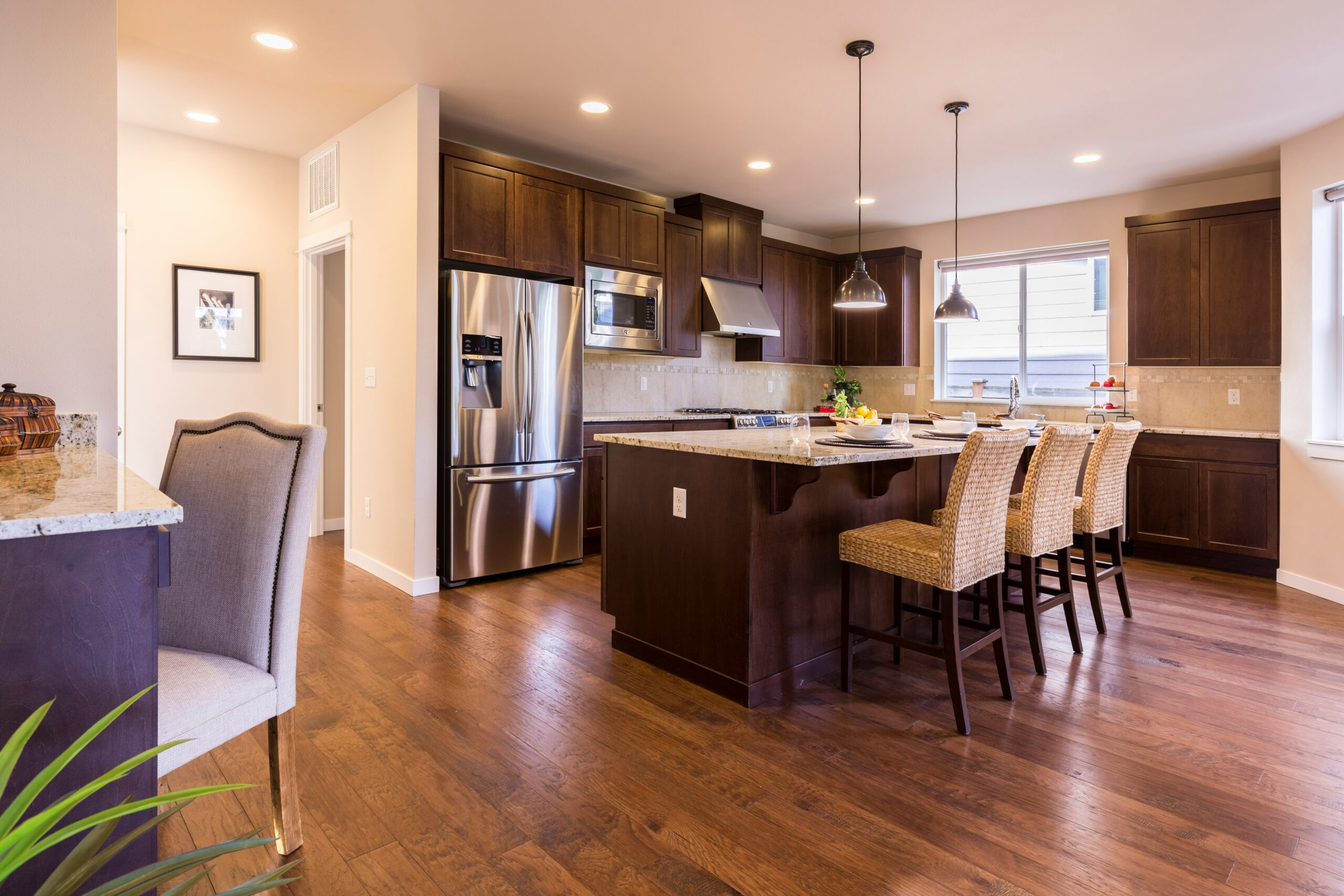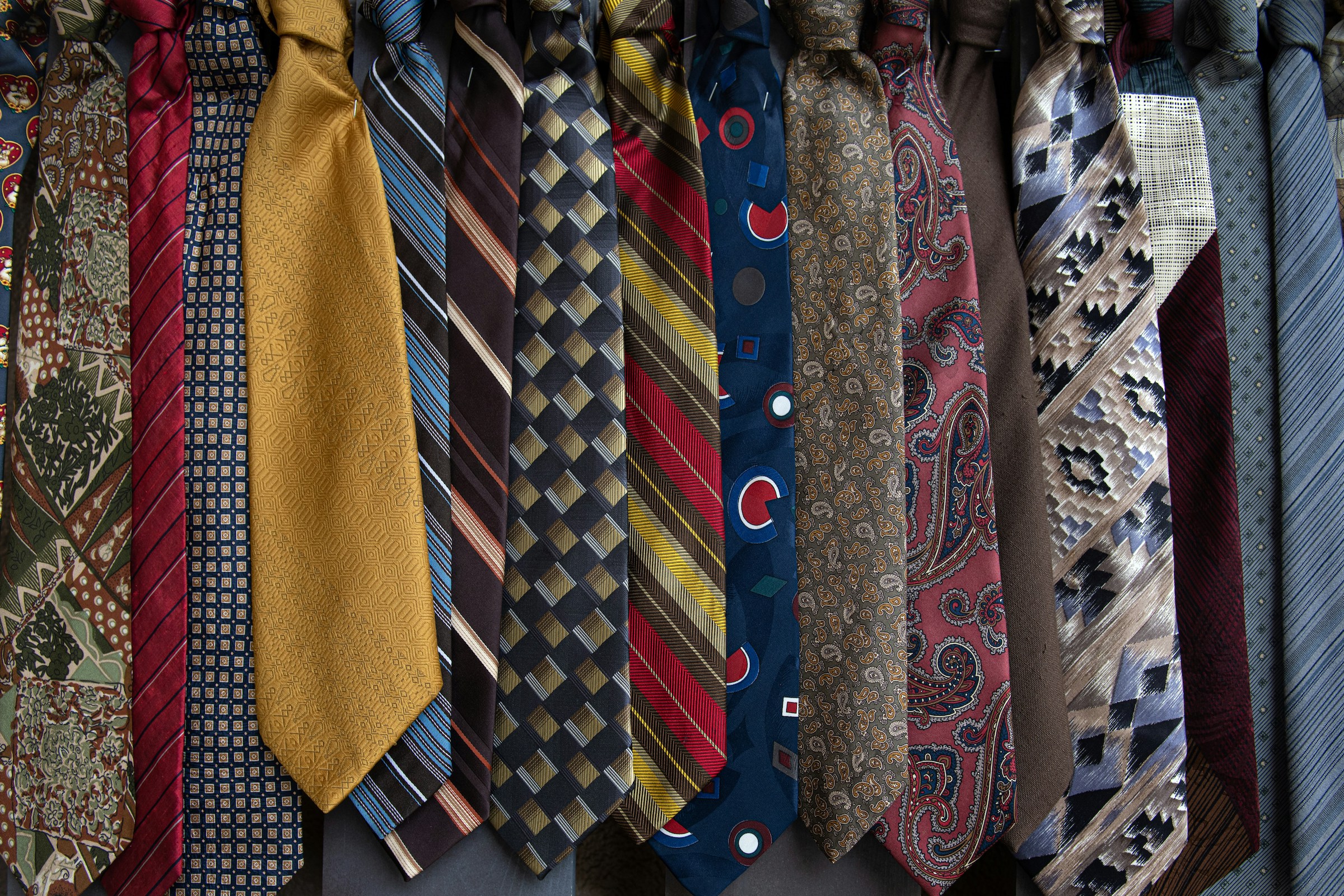Hardwood cabinets are a beautiful and durable addition to any kitchen, but they require proper care and maintenance to keep them looking their best. Regular cleaning and the right cleaning products can help preserve the wood’s finish and integrity. This comprehensive guide will provide you with detailed instructions, tips, and best practices for cleaning hardwood cabinets in the kitchen, ensuring they remain in pristine condition for years to come.
Understanding Hardwood Cabinets
Hardwood cabinets are made from various types of wood, including oak, maple, cherry, and walnut. Each type of wood has its unique characteristics and care requirements. Understanding the type of wood and its finish is essential for choosing the appropriate cleaning methods and products.
Types of Wood Finishes
Lacquered Finish
Lacquered finishes are durable and provide a high-gloss appearance. They are resistant to moisture and stains but can be sensitive to harsh chemicals and abrasive cleaning tools.
Polyurethane Finish
Polyurethane finishes are tough and water-resistant, offering excellent protection against daily wear and tear. They can withstand more aggressive cleaning methods but should still be treated with care.
Oil Finish
Oil finishes penetrate the wood, enhancing its natural beauty and providing a low-gloss appearance. They require regular reapplication to maintain their protective properties and should be cleaned with mild, oil-friendly products.
Wax Finish
Wax finishes provide a soft, lustrous appearance and are often used in combination with other finishes. They require periodic re-waxing and should be cleaned with products that do not strip the wax.
General Cleaning Guidelines
Regardless of the type of wood or finish, some general cleaning guidelines apply to all hardwood cabinets.
Dust Regularly
Dusting your cabinets regularly helps prevent the buildup of dirt and grime. Use a soft, lint-free cloth or a microfiber duster to avoid scratching the surface.
Avoid Excess Moisture
Excessive moisture can damage wood cabinets, causing warping and discoloration. Use a slightly damp cloth for cleaning and dry the surface immediately with a clean, dry cloth.
Test Cleaners on a Hidden Area
Before using any cleaning product, test it on a hidden area of the cabinet to ensure it does not damage the finish or wood.
Use Gentle Cleaning Products
Harsh chemicals and abrasive cleaners can damage wood finishes. Opt for gentle, wood-safe cleaning products to preserve the integrity of your cabinets.
Cleaning Supplies Needed
To effectively clean hardwood cabinets, gather the following supplies:
Soft, Lint-Free Cloths
Soft cloths are essential for dusting and cleaning without scratching the wood surface.
Microfiber Cloths
Microfiber cloths are highly effective for picking up dust and dirt and can be used damp or dry.
Soft Bristle Brush
A soft bristle brush is useful for cleaning intricate details and crevices in the woodwork.
Mild Dish Soap
Mild dish soap mixed with water is an excellent general-purpose cleaner for removing grease and grime.
White Vinegar
White vinegar diluted with water can be used for a natural cleaning solution that is effective against grease and stains.
Baking Soda
Baking soda is a gentle abrasive that can be used to remove stubborn stains without damaging the wood finish.
Olive Oil or Mineral Oil
Olive oil or mineral oil can be used to condition and polish wood cabinets, restoring their natural luster.
Commercial Wood Cleaner
Choose a commercial wood cleaner that is specifically formulated for hardwood cabinets. Follow the manufacturer’s instructions for best results.
Daily Cleaning Routine
A daily cleaning routine helps prevent the buildup of dirt, grease, and grime on your hardwood cabinets. Follow these steps for daily maintenance:
Wipe Down Surfaces
Use a damp microfiber cloth to wipe down the surfaces of your cabinets. This removes dust, fingerprints, and light spills. Dry the surface immediately with a clean, dry cloth.
Spot Clean Spills
Promptly clean up any spills to prevent stains and water damage. Use a damp cloth and mild dish soap if needed, and dry the area thoroughly.
Avoid Abrasive Tools
Avoid using abrasive sponges or brushes that can scratch the wood finish. Stick to soft cloths and gentle cleaning tools.
Weekly Cleaning Routine
In addition to daily cleaning, a more thorough weekly cleaning routine helps keep your hardwood cabinets in top condition. Follow these steps for a deeper clean:
Dust and Vacuum
Dust the cabinet surfaces with a soft, lint-free cloth or a microfiber duster. Use a vacuum with a soft brush attachment to remove dust from crevices and corners.
Clean Handles and Knobs
Handles and knobs can accumulate grease and grime from frequent use. Clean them with a damp cloth and mild dish soap, then dry thoroughly.
Clean Interior Surfaces
Empty the cabinets and wipe down the interior surfaces with a damp cloth. Use a soft bristle brush to clean corners and intricate details. Dry the surfaces completely before returning items to the cabinets.
Monthly Deep Cleaning Routine
A monthly deep cleaning routine ensures that your hardwood cabinets remain in excellent condition and helps address any buildup of grease or stains. Follow these steps for a comprehensive deep clean:
Prepare a Cleaning Solution
Mix a few drops of mild dish soap with warm water. Alternatively, mix equal parts white vinegar and water for a natural cleaning solution.
Clean Cabinet Exteriors
Dip a soft cloth in the cleaning solution, wring it out well, and wipe down the cabinet exteriors. Pay special attention to areas around handles and knobs where grease can accumulate. Rinse the cloth frequently to avoid spreading dirt.
Remove Stubborn Grease
For stubborn grease stains, make a paste of baking soda and water. Apply the paste to the stain with a soft cloth and gently scrub in a circular motion. Wipe away the residue with a damp cloth and dry the area thoroughly.
Polish the Wood
After cleaning, condition the wood by applying a small amount of olive oil or mineral oil to a soft cloth. Rub the oil into the wood in the direction of the grain, then buff with a clean, dry cloth to remove any excess oil.
Cleaning Specific Types of Stains
Grease Stains
Grease stains are common in the kitchen and can be challenging to remove. Use a mixture of warm water and mild dish soap to clean the grease. For tougher stains, a paste of baking soda and water can be effective.
Water Stains
Water stains can leave unsightly marks on wood cabinets. To remove them, mix equal parts vinegar and water and gently rub the stain with a soft cloth. Dry the area thoroughly.
Food Stains
Food stains should be cleaned promptly to prevent them from setting. Use a damp cloth and mild dish soap to wipe away the stain, then rinse and dry the area.
Fingerprints and Smudges
Fingerprints and smudges can be removed with a damp microfiber cloth. For stubborn smudges, use a small amount of mild dish soap and water.
Dealing with Scratches and Dents
Minor Scratches
Minor scratches can be treated with a wood touch-up marker that matches the color of your cabinets. Apply the marker to the scratch, then blend it with a soft cloth.
Deeper Scratches and Dents
Deeper scratches and dents may require professional repair. For DIY repairs, wood filler can be used to fill in the scratches. Sand the area smoothly and apply a matching wood stain.
Maintaining the Finish
Reapply Finish as Needed
Depending on the type of finish, you may need to reapply it periodically. For oil finishes, reapply oil every few months. For lacquer or polyurethane finishes, reapply as needed to maintain protection.
Avoid Harsh Chemicals
Harsh chemicals and abrasive cleaners can damage the finish on your hardwood cabinets. Stick to gentle, wood-safe products to preserve the finish.
Polishing and Conditioning
Regularly polish and condition your cabinets to maintain their natural luster. Use a product appropriate for the type of wood and finish.
Preventing Damage
Use Cabinet Liners
Cabinet liners can help protect the interior surfaces from spills and scratches. Choose liners that are easy to clean and non-adhesive.
Avoid Excessive Moisture
Excessive moisture can cause wood cabinets to warp and discolor. Use exhaust fans while cooking to reduce humidity, and promptly wipe up any spills.
Protect from Heat
Avoid placing hot items directly on or near your cabinets. Use heat-resistant pads or trivets to protect the wood from heat damage.
Long-Term Care Tips
Regular Inspections
Regularly inspect your cabinets for signs of wear, damage, or mold. Address any issues promptly to prevent further damage.
Adjust Hinges and Handles
Over time, hinges and handles can become loose. Regularly check and tighten them to ensure your cabinets remain functional and secure.
Professional Maintenance
Consider professional maintenance and refinishing every few years to keep your cabinets looking their best. A professional can address any deep scratches, dents, or finish issues.
Environmental Considerations
Eco-Friendly Cleaning Products
Choose eco-friendly cleaning products that are biodegradable and free of harsh chemicals to reduce your environmental impact.
Water Conservation
Be mindful of water usage when cleaning your cabinets. Use only as much water as necessary and avoid excessive rinsing.
Proper Disposal of Cleaners
Dispose of cleaning products according to local regulations to prevent environmental contamination. Avoid pouring chemicals down the drain.
FAQs About Cleaning Hardwood Cabinets in the Kitchen
What is the best way to dust hardwood cabinets?
Use a soft, lint-free cloth or a microfiber duster to gently remove dust without scratching the surface.
Can I use water to clean my hardwood cabinets?
Yes, but use it sparingly. A slightly damp cloth is best, and always dry the surface immediately to prevent moisture damage.
Is vinegar safe to use on hardwood cabinets?
Yes, diluted white vinegar is safe and effective for cleaning grease and grime. Mix equal parts vinegar and water for best results.
How do I remove grease stains from my cabinets?
A mixture of warm water and mild dish soap works well. For tougher stains, a paste of baking soda and water can be used.
Can I use commercial wood cleaners on my cabinets?
Yes, but choose cleaners specifically formulated for hardwood cabinets and follow the manufacturer’s instructions.
How often should I clean my hardwood cabinets?
Dust weekly, wipe down surfaces monthly, and do a deep clean every three to six months.
What should I avoid when cleaning hardwood cabinets?
Avoid harsh chemicals, abrasive sponges, and excessive water to prevent damaging the wood and finish.
How can I prevent my cabinets from becoming sticky?
Regularly clean to prevent buildup of grease and grime, and use a gentle cleaner to keep surfaces smooth.
Can I use olive oil to polish my cabinets?
Yes, olive oil can be used to condition and polish wood cabinets, enhancing their natural luster.
How do I clean cabinet handles and knobs?
Wipe them down with a damp cloth and mild dish soap, then dry thoroughly to prevent water spots.
What should I do if my cabinets have water stains?
Gently rub the stain with a mixture of vinegar and water, then dry the area completely to prevent further damage.
Are there natural alternatives to commercial cleaners?
Yes, a mixture of vinegar and water or baking soda and water can effectively clean and deodorize your cabinets.
How do I handle scratches on my cabinets?
Use a wood touch-up marker that matches the color of your cabinets, or apply wood filler for deeper scratches.
Is it safe to use a steam cleaner on hardwood cabinets?
No, steam can penetrate the wood and cause warping or damage to the finish. Stick to damp cloths for cleaning.
How can I maintain the shine of my hardwood cabinets?
Regularly polish with a wood-friendly product and avoid abrasive cleaners that can dull the finish.
What’s the best way to clean the inside of my cabinets?
Empty the cabinets, then wipe down the interior with a damp cloth and mild detergent. Dry thoroughly before replacing items.
Can I use lemon oil on my cabinets?
Yes, lemon oil can be used to clean and condition wood cabinets, leaving a pleasant scent.
How do I prevent mold and mildew on my cabinets?
Keep the area dry, use an exhaust fan while cooking, and clean up spills immediately to prevent moisture buildup.
What’s the best way to remove fingerprints from cabinets?
Use a damp microfiber cloth to gently wipe away fingerprints and smudges.
How can I freshen up the smell of my cabinets?
Place a bowl of baking soda or a sachet of activated charcoal inside the cabinets to absorb odors.
What should I do if my cabinets become sticky?
Clean with a mixture of warm water and mild dish soap, then rinse and dry thoroughly to remove sticky residue.
Can I use Murphy’s Oil Soap on my cabinets?
Yes, Murphy’s Oil Soap is safe for hardwood cabinets and helps clean and condition the wood.
How do I remove crayon marks from my cabinets?
Use a damp cloth and a small amount of baking soda to gently scrub away crayon marks.
Can I use bleach to clean my cabinets?
No, bleach can damage the wood and finish. Stick to mild detergents and natural cleaning solutions.
What’s the best way to clean cabinet edges and corners?
Use a soft bristle brush to reach into corners and edges, and follow with a damp cloth to remove debris.
How do I clean cabinets with glass inserts?
Clean the glass with a vinegar and water solution or a glass cleaner, being careful to avoid the wood frame.
Can I use disinfectant wipes on my cabinets?
Disinfectant wipes can be used occasionally, but rinse with a damp cloth afterward to remove any residue.
How do I clean sticky residue from adhesive labels?
Apply a small amount of cooking oil to the residue, let it sit, then gently scrape off with a soft cloth.
What should I use to clean painted wood cabinets?
Use a mild detergent and water solution, and avoid abrasive cleaners that can damage the paint.
Can I use a vacuum cleaner to clean my cabinets?
Yes, use a vacuum with a soft brush attachment to remove dust and debris from cabinet surfaces and crevices.
How do I clean cabinets with a high-gloss finish?
Use a soft, damp cloth and a mild cleaner, then buff with a dry microfiber cloth to maintain the shine.
What’s the best way to clean cabinets with an antique finish?
Use a gentle, wood-safe cleaner and avoid excessive water to preserve the antique finish.
How do I remove mildew from my cabinets?
Wipe with a mixture of vinegar and water, then dry thoroughly to prevent further mildew growth.
Can I use dish soap to clean my cabinets?
Yes, a few drops of mild dish soap in warm water is effective for cleaning grease and grime.
How do I prevent my cabinets from warping?
Avoid excessive moisture, use an exhaust fan while cooking, and ensure cabinets are properly sealed.
What’s the best way to clean the top of my cabinets?
Use a damp cloth and mild detergent, and consider placing liners on top to catch dust and grease.
How do I clean the cabinet doors?
Wipe down with a damp cloth and mild detergent, then dry thoroughly to prevent water damage.
What’s the best way to clean wooden drawer interiors?
Empty the drawers, wipe with a damp cloth and mild soap, and dry thoroughly before replacing items.
Can I use baby wipes to clean my cabinets?
Baby wipes can be used for quick cleanups, but rinse with a damp cloth afterward to remove any residue.
How do I clean greasy kitchen cabinets?
Use a mixture of warm water and mild dish soap, or a vinegar and water solution, to cut through grease.
What’s the best way to clean cabinet hinges?
Wipe with a damp cloth and mild soap, then dry thoroughly to prevent rust and corrosion.
Can I use rubbing alcohol to clean my cabinets?
Rubbing alcohol can be used to remove sticky residues, but use sparingly and rinse with water afterward.
How do I clean wooden shelves in my cabinets?
Remove items, wipe with a damp cloth and mild detergent, and dry thoroughly before replacing items.
What’s the best way to clean cabinets without removing the finish?
Use gentle, wood-safe cleaners and avoid abrasive sponges or harsh chemicals that can strip the finish.
How do I clean under the cabinet edges?
Use a soft bristle brush or a cloth wrapped around a thin object to reach and clean under the edges.
Can I use a degreaser on my cabinets?
Mild degreasers can be used for heavy grease buildup, but always test on a hidden area first and rinse thoroughly.
How do I clean and polish my cabinets in one step?
Use a wood cleaner and polish combo product, following the manufacturer’s instructions for best results.
Conclusion
Proper care and maintenance of hardwood cabinets in the kitchen can preserve their beauty and functionality for years to come. By following the cleaning routines and tips outlined in this guide, you can ensure your cabinets remain in top condition. Remember to use gentle cleaning products, avoid excessive moisture, and regularly inspect and maintain your cabinets.
With the right care, your hardwood cabinets will continue to enhance the beauty of your kitchen and provide reliable storage for all your culinary needs.



